Hi everybody! This time we are in Vidin (Видин), Bulgaria. We are enjoying a lot going around this country. We don’t have a fixed itinerary. We decide direction based on the cool stuff the map points us to see or the local recommendations. So, one of these days while checking the map, we saw a wide and long sign: the great Danube river!
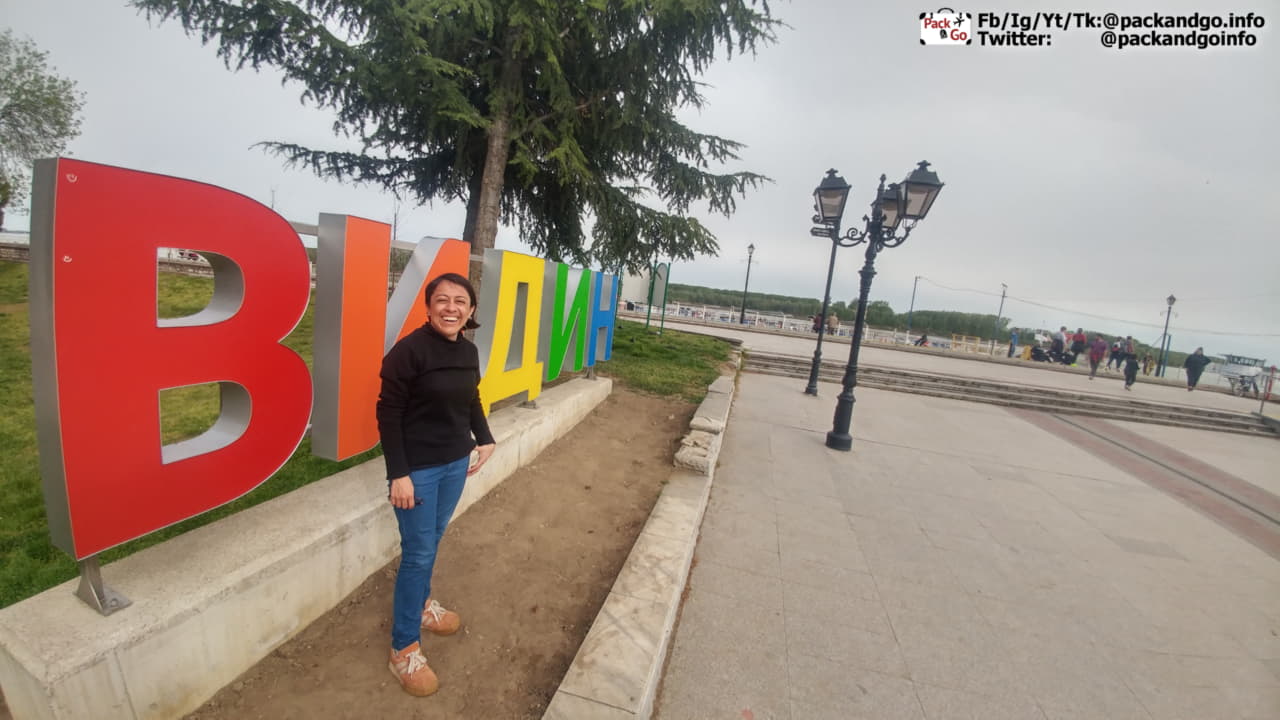
The Danube is the second-longest river in Europe. It flows from Germany all the way 2,850 kilometers, passing through Slovakia, Croatia, Austria, Hungary, Ukraine, Romania, Serbia, and Bulgaria before draining into the Black Sea. That is how we ended up driving to Vidin. Let’s explore it together!
Where’s Vidin?
Take your map and go to the left corner of Bulgaria. Vidin is in the northwest part of the country. It’s near the borders with Serbia and Romania. It’s one of the oldest cities in Bulgaria and an important port for this nation.
What’s the origin of Vidin?
Vidin was built on the remains of an ancient Celtic settlement called Dunonia (3rd century BC). That means “fortified hill” in Celtic. This settlement became later the Roman fortified Bononia. The place grew through time. Then, the Slavs arrived and settled calling the place Bdin or Badin. As you see, this name is closer to the current one. In a moment, it became part of the Roman Empire and remained that way until the 14th century. After the Ottomans arrived and later the modern Bulgarians. The origin of Vidin is really old.
What to do in Vidin?
When we arrived, one of the first things we heard from locals was that Vidin is not a common holiday destination for Bulgarians. Our first impression was, that we were not in a tourist spot. And that’s ok! We have been in places not really designed for tourists and we have had great experiences getting the real local taste. But while exploring Vidin, this was not the case. We found many international tourists. Especially foreigners enjoying and getting the best out of the time their cruisers stop here. So we joined them!
Baba Vida fortress (Средновековна Крепост Баба Вида).
We were told that this is the only medieval Bulgarian fortress and castle that is fully preserved. Its construction dates back to the 10th-14th century. The fortress was built on the remains of the ancient Bononia. First, the castle was raised. Then the rest of the place. Ivan Stratsimir lived there. He was the last Bulgarian king before Bulgaria fell under Ottoman control.
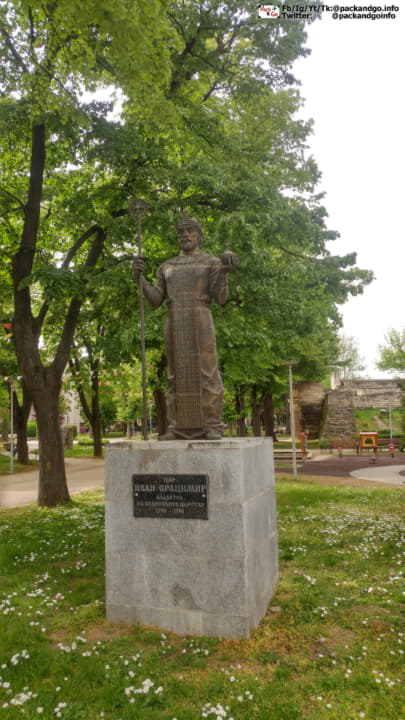
Ottomans used for a long time the fortress. After the Bulgarian Liberation (1878), the premises were occupied by the army. Besides them, there have been discoveries of remains that belong to the Roman, Byzantine, early Bulgarian, and late Bulgarian periods.
And if you like stories, there’s one here about the name of the fortress. Vida was supposed to be a woman, the oldest of three sisters, daughters of a rich Bulgarian boyar. When Vida witnessed how the marriages of her sisters Gamza and Kula failed, she decided not to get married. She rejected every single proposal she got. The castle was built and she decided to stay in it forever.
There’s a moat around the fortress. Currently is dry but in the past, it was filled with water from the Danube which is very close. You will see that the bridge was mobile, the nine corners of the building, its intermediate towers, and the walls. Besides, there’s a prison and a hanging zone in the fortress.
You can take a look at these, the cells, a prisoner and an executioner figures, some old artifacts for torturing, gallows, cannons, and objects that were used in the past for daily tasks. The fortress was strategically built just next to the Danube river. Currently, while being at its highest points you can have very nice views of the great Danube.
If you go in the Summer, there’s a chance for you to find concerts, theater performances and other cultural activities there.
| Follow PackAndGo.info at: | |
| YouTube | @packandgo. |
| @packandgo.info | |
| X | @packandgoinfo |
| Bluesky | @packandgo.bsky.social |
| @packandgo.info | |
| TikTok | @packandgo.info |
Ottoman Gates, Kaleto.
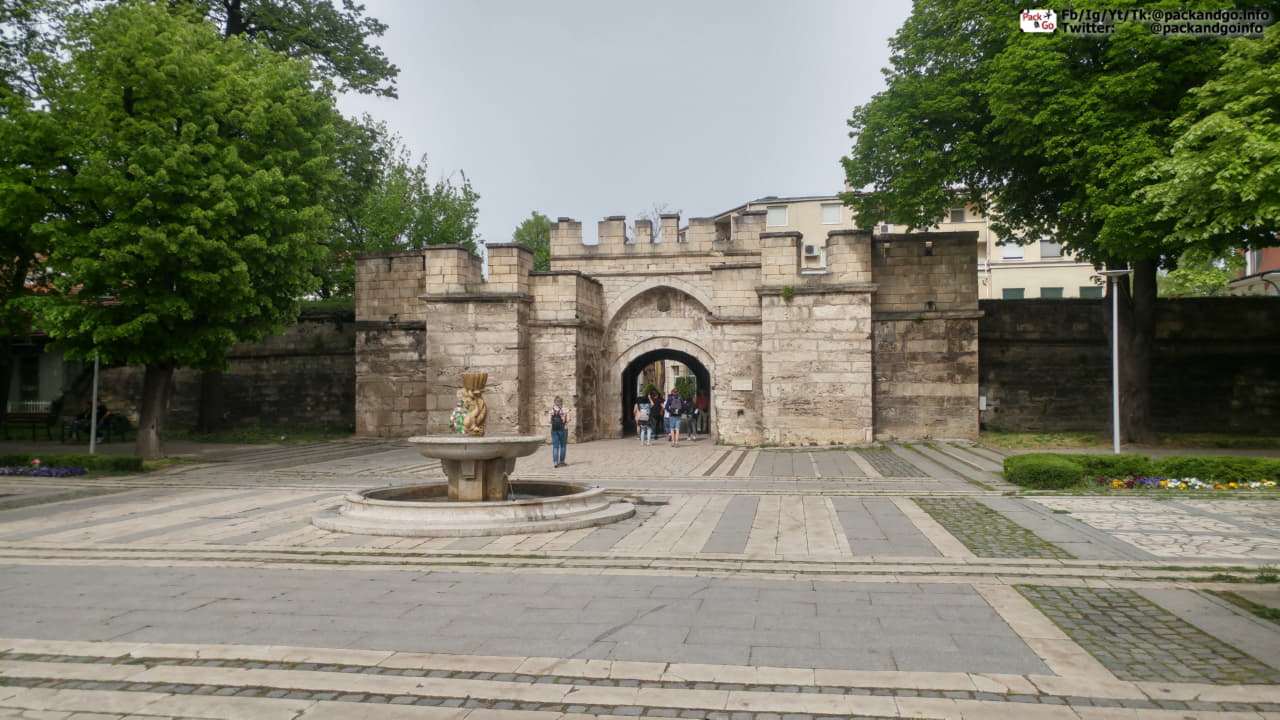
Guys, in the past, during Ottoman rule, they built a fortress to protect the city. As a result, there’s a wall still visible and in good condition around the center of Vidin. Walking there you can see the wall and its different gates. Being at Kaleto has a magical effect. You see contemporary houses, maybe a soviet building in the distance, and a few steps later, you cross an Ottoman gate that dates back to the 17th-18th centuries. No doubt, Vidin means history, a lot of history.
Historical Museum Vidin.
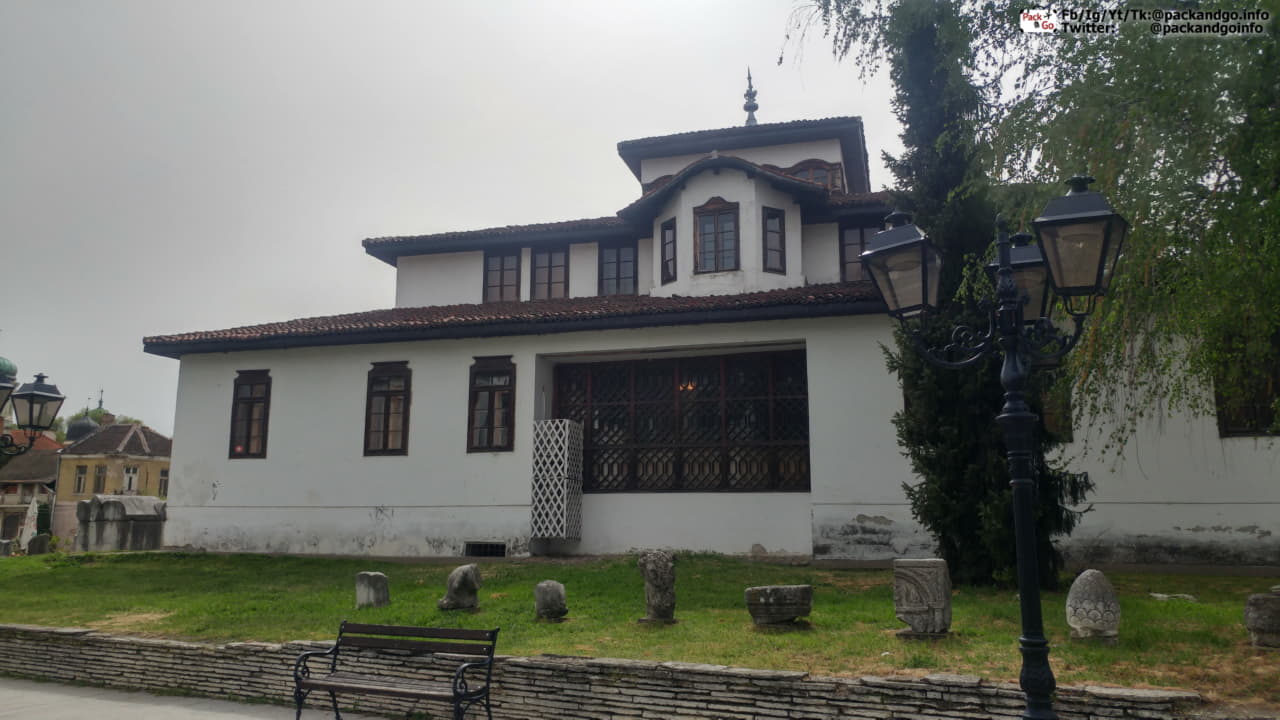
It’s also known as the Konaka museum. Konaka comes from the Turkish “konak” which means big building. The architecture of the building shows features of the Bulgarian Renaissance. The Ottomans used it as a residence. It was later a police station and now, it’s the historical museum of the city. Exhibitions show Vidin’s evolution through different periods. Being one of the oldest cities in this country, be ready for a long story.
The Orthodox St. Panteleimon Church.
It is small, and its exterior is not impressive but you can like the artwork of the interior. It’s a construction that belongs to the 17th century. An inscription on the door says it was built in 1634. There are images of saints on the walls and gospel scenes on the vault. In the center, you will see two medallions, one for Jesus and the other for the Virgin Mary. All the art inside came through time. A Slavic inscription in the church’s nave points that the painting of the church occurred in 1646. The place seems to be linked to Sophronius of Vratsa, a Bulgarian cleric that had an important role in the early Bulgarian Revival (Renaissance).
You may find the church close. Clergymen around can open for you. They don’t allow you to take pictures but they can give you interesting information about the place.
If you are into churches and their architecture, there are more choices for you in Vidin. For instance, St. Dimitar cathedral is considered the second biggest temple in Bulgaria. St. Alexander Nevski in Sofia tops the list. St. Dimitar also offers interesting historical facts and stories. If you want to know them, just Pack and Go! hahaha
Danube river park.

We like parks a lot! They are the perfect spot to have a break, to get shade during hot days, or to get a snack while lying on the grass or sitting on a comfy bench. And this park has this and more. You can find different food stands for enjoying an ice cream, a cold beer, or a complete meal with a marvelous plus, the view of the Danube!

The park is around 2 kilometers for you to have a nice walk. It goes along the river. We couldn’t stop watching the Danube so we got a beer on one terrace. We spent some hours there just watching the cruisers' activity on the river, people going around and having some relaxing and fun time. Go to the park and get a bit of Vidin’s essence!
Danube cruises.
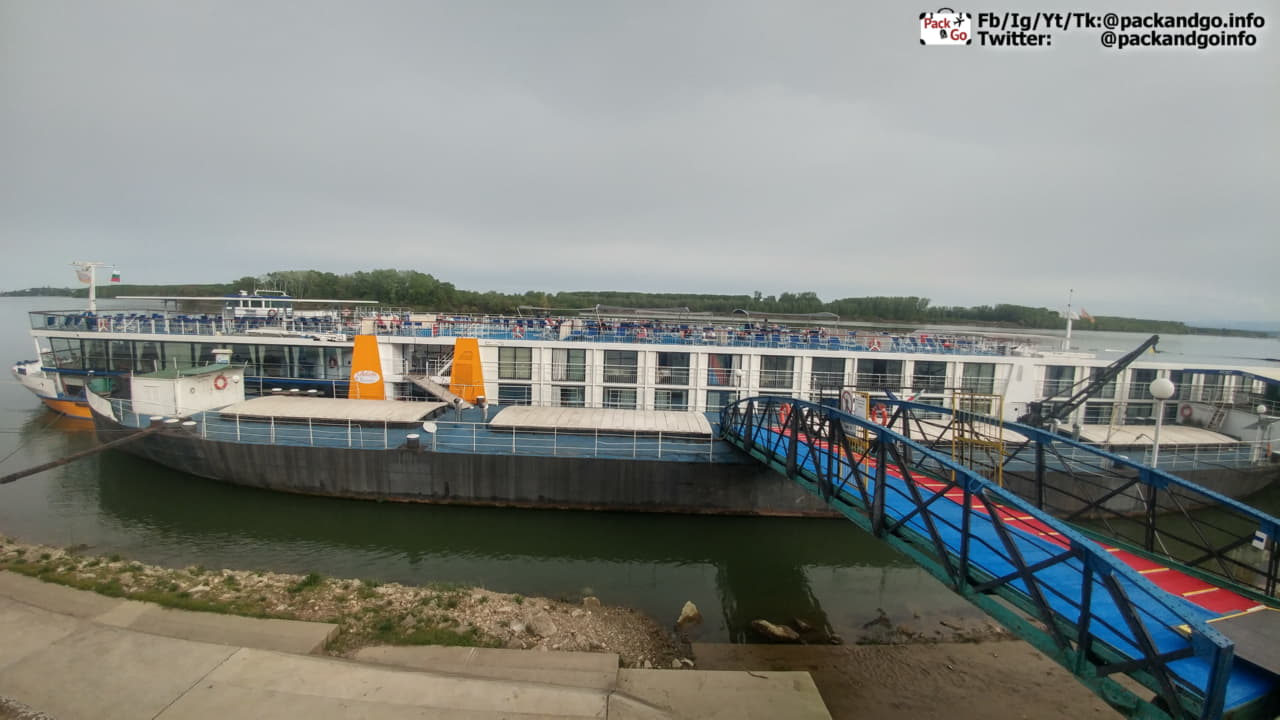
While in the park, we talked with some people about the cruisers. Different cruise lines operate in the Danube. They said the Danube cruisers are very demanded every year and Vidin is a must-stop on their itineraries. So if you are into cruisers, you could consider it a choice to visit Vidin, Bulgaria, and enjoy the great Danube.
Vidin is also included in Serbian and Romanian tours.
The bridge.
There’s a bridge that connects Bulgaria (Vidin) to Romania (Calafat). It was finished in 2013. It goes across the Danube and it replaced a ferry that used to operate there. It’s mostly for cars because it’s away from the center of Vidin, in the industrial zone. But if somehow you are there walking or on your bicycle, you can take it for free and have another angle of the Danube.
Boat restaurants.

If you feel like having lunch or dinner directly on the Danube, this is your choice. There are a few boat restaurants there waiting for you with their menus full of delicious Bulgarian food. Feel free to try rakia or a cold Bulgarian beer!
Conclusion.
Guys, Vidin, the ancient guardian of the Danube is an alive city that is worth visiting! Due to its location, it can be your last stop to enjoy the Bulgarian culture before crossing to a neighboring country, or it can be your access point to this beautiful country. As we said before, Vidin means lots/tons of history. And in our opinion, learning history is easier and more interesting when you travel. So why don’t you just pack and go to Vidin?
Follow our route! Let’s discover together our next stop!
| Follow PackAndGo.info at: | |
| YouTube | @packandgo. |
| @packandgo.info | |
| X | @packandgoinfo |
| Bluesky | @packandgo.bsky.social |
| @packandgo.info | |
| TikTok | @packandgo.info |
Check our previous articles:
The best things to do in Belogradchik
Belogradchik Rocks, the epic rocks soaked with blood and hopes for freedom
What to visit near Lovech, Bulgaria?
What to do in Lovech (Ловеч)? - A great Bulgarian destination you should visit!
